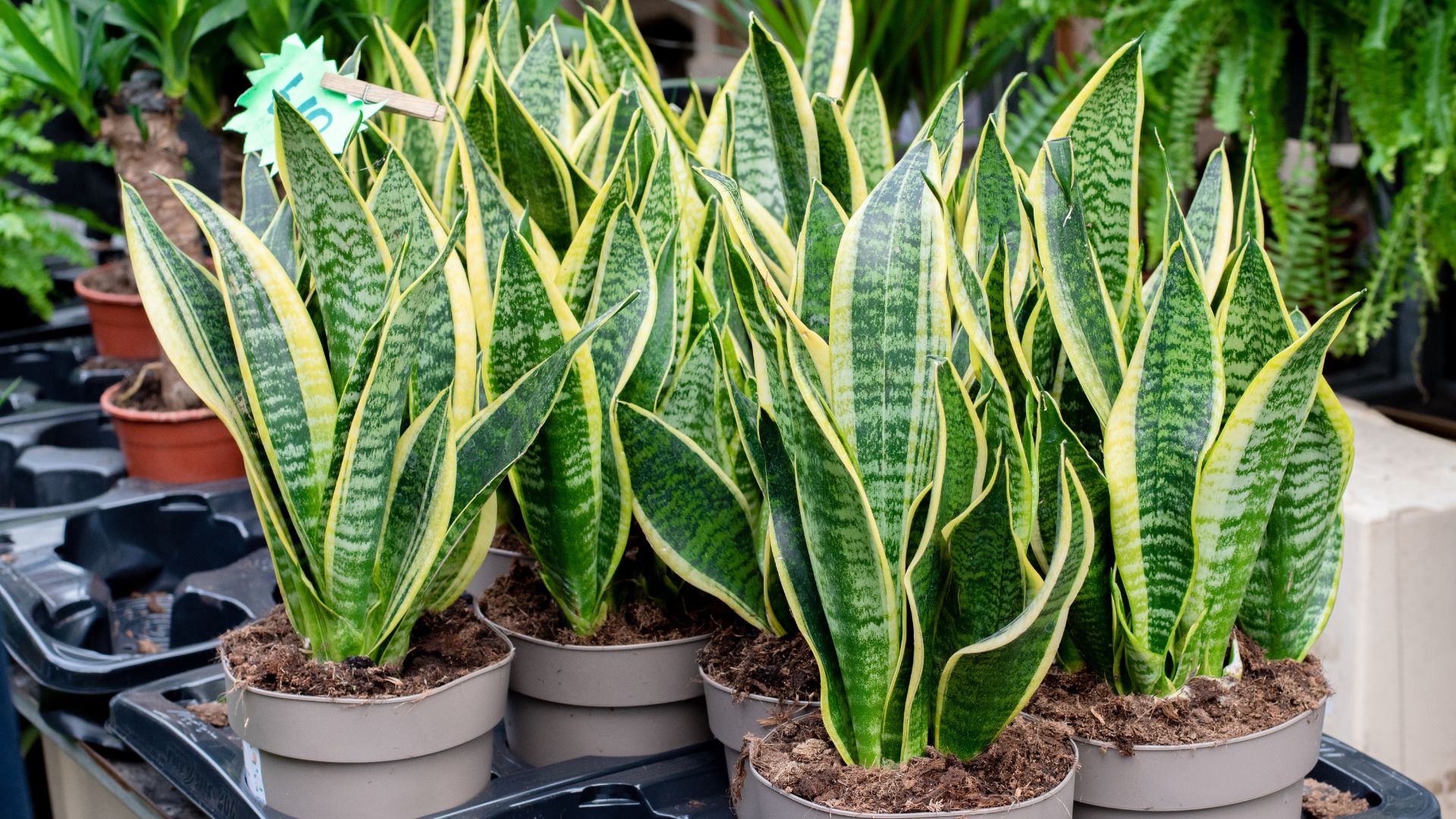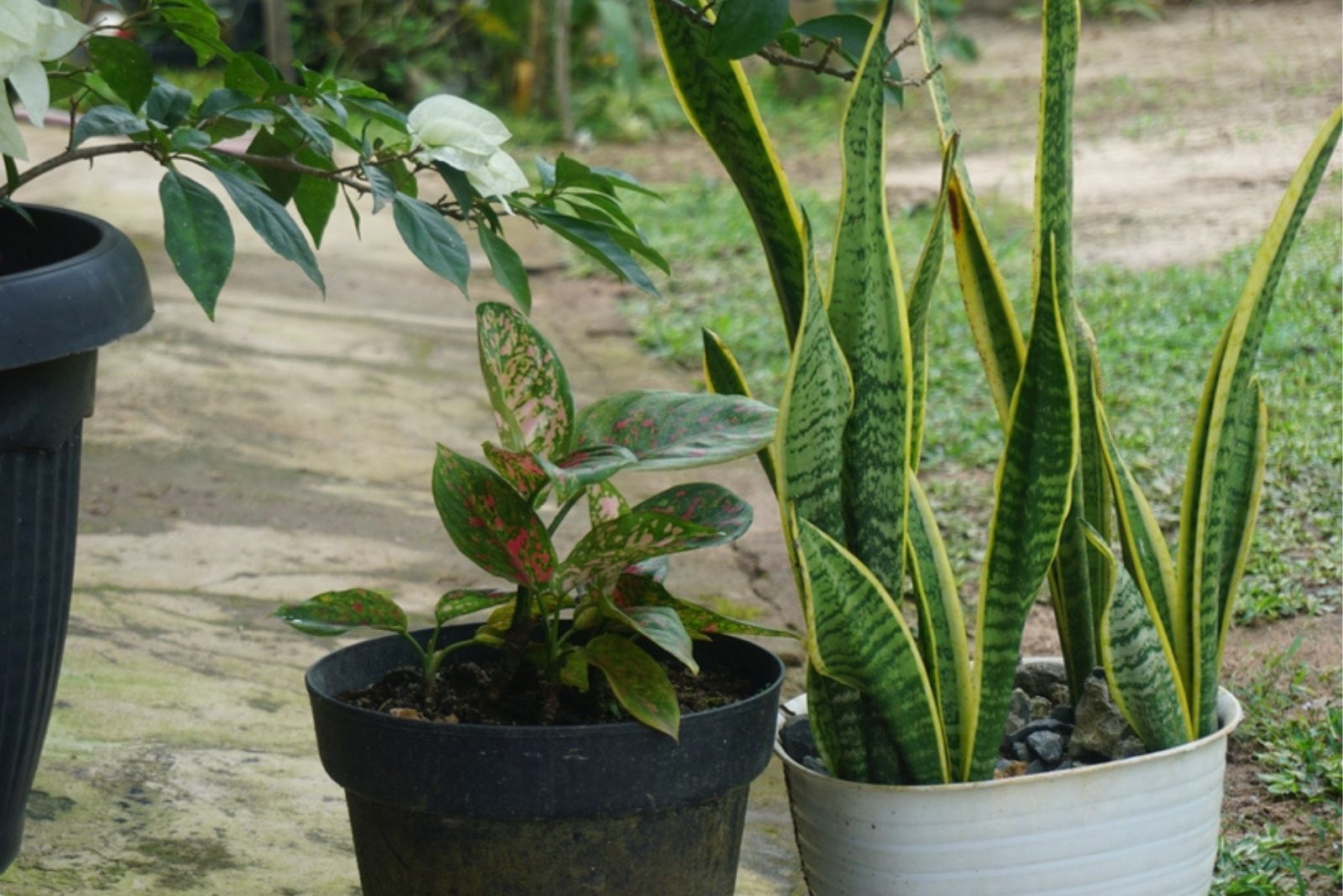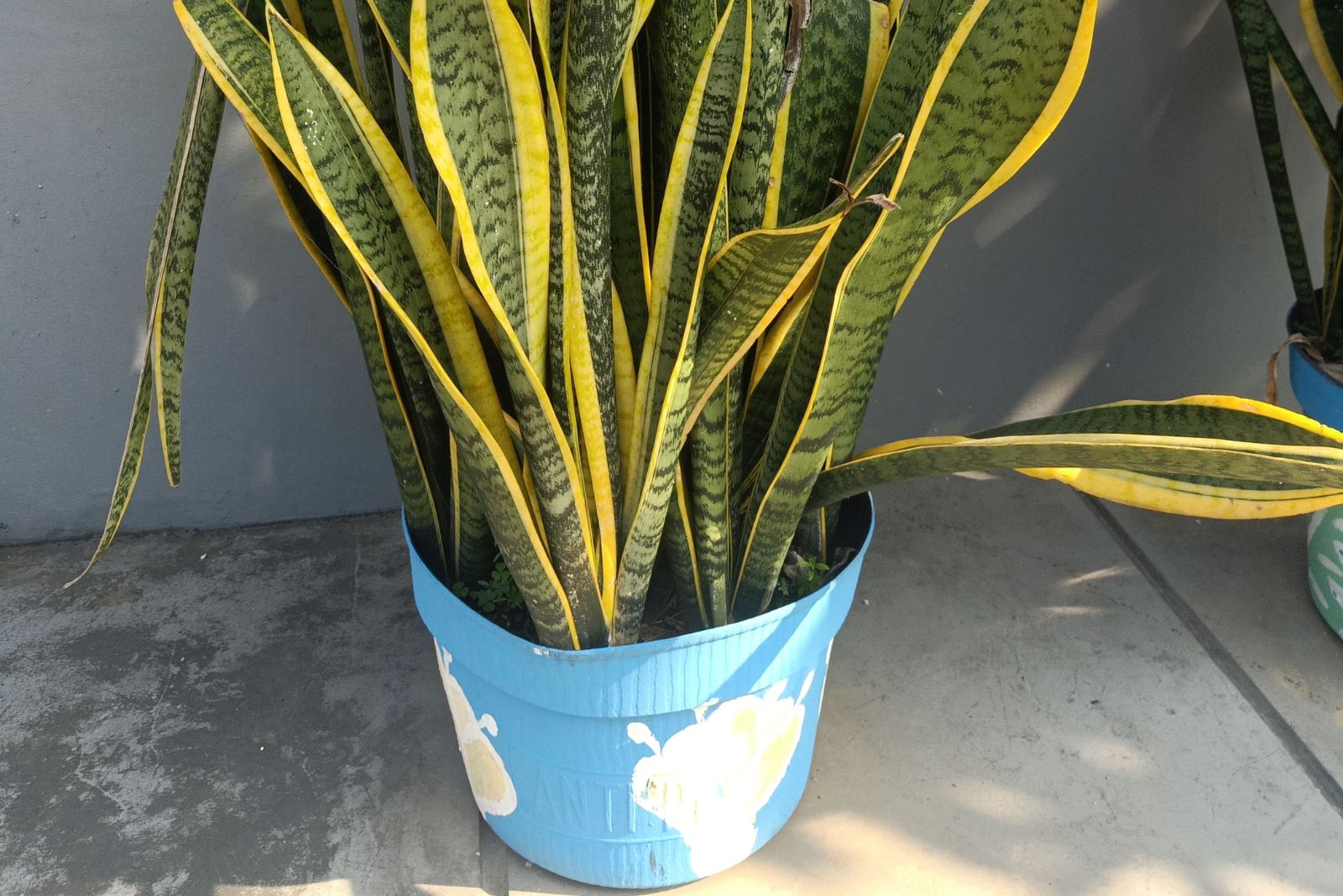We all know that snake plants are popular houseplants, but wouldn’t they look dashing in the garden, too?
With their sword-like leaves and decorative planters, snake plants would truly bring a stunning touch to porches and patios.
However, tropical plants are a bit tricky to grow outdoors, especially if you live in colder climates. But with a few simple adjustments, your snake plants can be growing and thriving in fresh air outside!
In this article, we are going to discover more about growing snake plants outside and also share some useful tips on how to do it properly.
Stay tuned!
But Honestly, Can Snake Plants Grow Outdoors?
Snake plants are known for their resilience and adaptability. And they can indeed flourish outdoors, but only if the growing conditions are optimal.
For starters, we are talking about tropical plants that are used to growing in warm temperatures. Snake plants are hardy in USDA zones 9 through 11.
Snake plants can’t tolerate temperatures below 50 degrees Fahrenheit.
Their tall, sword-like leaves are also shallow rooted, which means that they are vulnerable to wind damage, too much moisture, and scorching.
You don’t have to worry about light conditions because snake plants can tolerate low light settings, too. Put them anywhere you want, as long as they are nice and warm!
Related: The Best Pot For Snake Plant: Top Tips
How To Move Your Snake Plant Outside
You have to consider its current indoor location first. Put your snake plant outdoors where they can receive a similar amount of light. Most of them grow well when exposed to 3 or 4 hours of outdoor sunlight during the day.
But if your indoor plant has received just a few hours of indirect sunlight, you should gradually start exposing the plant to more light for longer periods of time.
A few hours of bright outdoor sunlight will keep your snake plant healthy. It might even trigger flower production, which is rarely seen in snake plants. Exposing it to too much direct sunlight is not a good idea because the leaves might scorch and lose their colors.
It is best to shield your snake plant from wind and harsh weather because they have shallow roots.
If you live in a region with a rainy season in the spring, wait until it has passed to bring your snake plant outdoors. But you can also cover the area so that they are not exposed to constant rain. Remember, snake plant varieties like dry soil.
How To Care For Your Outdoor Snake Plant
All you have to do is prevent overwatering and never expose your snake plant to scorching sun throughout the day.
Overwatering can lead to snake plant roots rotting and decaying. Roots are the foundations of the plant, and once they’re hurting, your entire plant is suffering.
So, to avoid this issue, let the soil completely dry out before watering your snake plant again.
Even though snake plants love warm weather, that doesn’t mean they should be exposed to extremely hot temperatures. The ideal temperature range for these hardy plants is between 60 and 75 degrees Fahrenheit.
They will tolerate temperatures as high as 90 degrees, but anything above can be damaging for the plant. If you have very hot summers, consider growing your snake plant in the shade.
Grow your snake plant with other thirstier plants as they won’t end up competing for water and nutrients. You can also combine them with succulents due to their similar growing requirements.
When Should You Bring It Inside?
As seasons change, understanding the appropriate time to bring your outdoor snake plant indoors is crucial. As nighttime temperatures begin to drop between 50 and 60 degrees, you should bring your snake plant indoors.
Snake plants are not a fan of temperature fluctuations, although they are not as damaging. Bring the plant inside and put them in a place with plenty of bright, indirect sunlight.
Give it a couple of days or a week to adjust to indoor conditions. Then, you can move it to its original location before you bring it outdoors.
Find out more about snake plants’ temperature tolerance here: Snake Plant Temperature Tolerance: All You Need To Know



